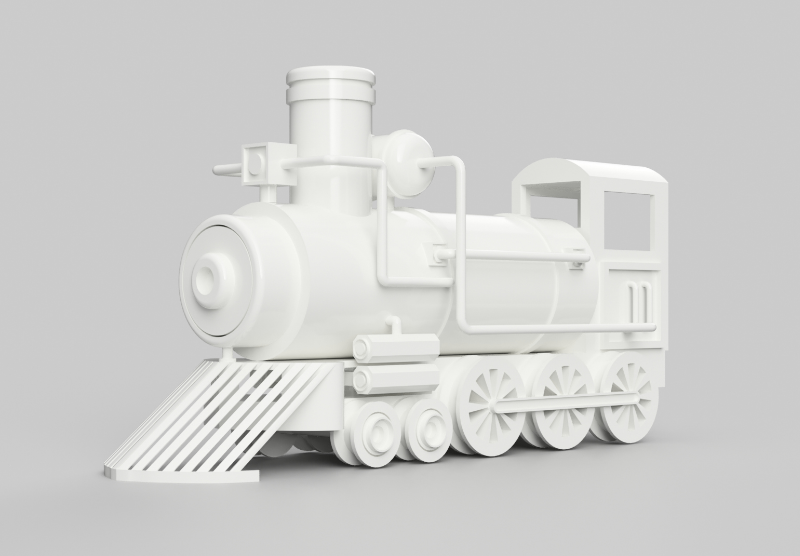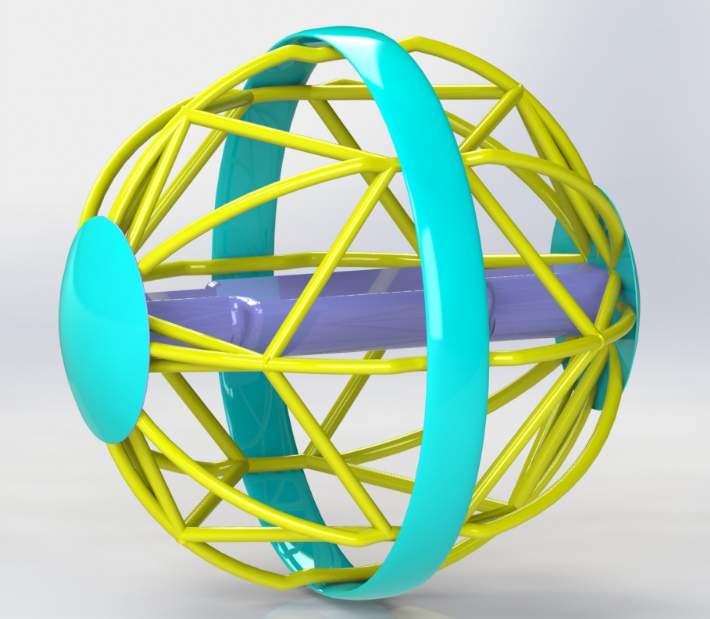3D modeling is an in-demand career. You can work almost anywhere as a 3D modeler once you’ve become skilled enough. Today, 3D modeling isn’t just for video games and animated movies. Big businesses need it in order to develop new products efficiently, customize old products, and even design whole buildings from the bottom up.
Once you get your foot in the door, 3D modeling is a well-paid career with an annual salary of up to $100,000 per year. It also satisfies the creative urge many artistically-minded people have. It does take work though, and these tips could help you get started.
Take a Test Drive
Becoming a professional 3D modeler involves a significant investment of time, and sometimes money as well. While it’s possible to become a 3D modeler on experience alone, especially if you want to become a freelance 3D modeling designer, certification or a bachelor’s degree can make the difference in how you start out.
There’s nothing like signing up for a bunch of classes, purchasing the software, and discovering that you hate most aspects of a career. Before you start working toward becoming a professional, play around with it for a while. There are many options for 3D modeling software, some free, for you to test the waters with.
If you find that you love it, you’ll already be one step closer through the time you spent practicing. You can start your education with confidence knowing this is a career you can truly enjoy.
Start Small
Your first project should be small and simple. Most computer engineers start out learning to code by creating the simple “Hello World!” alert. This task isn’t flashy or in any way unusual, but it helps guide you through the first simple steps of coding.
Just like with coding, you need to start with straightforward objects when beginning. Even if it sounds boring, it will lay a foundation for stronger skills. One artist suggests that you start with a bowling ball. This will help you begin to learn techniques like beveling edges, shading, and lighting. As you get better, you can move on to more complicated projects.
Other test subjects recommended include boxes, teapots, and other simple objects. Even if you breeze through these, it will pave the way for getting more complicated projects done and give you the foundation for a portfolio.
Generalize First
Some say that you should know your niche, but that isn’t always the best way to start out. Being stuck in a niche limits the amount of work you can find. It could cut you off from discovering a different specialty that you like better.

When you limit yourself to one area, you’re under much fiercer competition. That competition may be better than you are, and it will be harder to find someone willing to take a chance on a novice when there are other more experienced modelers to choose from.
As time goes on, you can start focusing on a specialty. You may find you have more than one, and that’s okay. That’s the benefit of generalization.
Be Willing to Work for Very Little
When you first start out as a 3D modeler, who you have worked with is everything. It’s sometimes worthwhile to price projects on the lower end of the scale when you’re first starting out. This makes it more likely a company will take a chance on a new 3D modeler – after all, they’ll save money if it works out.
While you can also offer free work, this can sometimes backfire. Customers can get used to getting freebies, and when it comes time to move on to paid work, they may be reluctant to start putting money down. If you’re having trouble finding someone willing to take a chance, offering free action to begin building your portfolio is an option.
But Also Know What You’re Worth
3D modeling is a high-paying job. While you may have to work for lower pay initially, you shouldn’t continue doing so forever. Many people fall into the rut of refusing to ask for a pay raise, or never moving to a company that will pay them what they’re worth.
Freelancers are especially guilty of this since they set their own rates, but your wages need to reflect your knowledge and experience. Accepting lower pay is only worthwhile to get yourself started. Once you’ve improved, make sure you’re being paid what you’re worth.
Choose Your Software and Stick with It
Trying to learn ten different programs that do the same thing could make mastering any one of them harder. Find out which software will do what you want and concentrate on learning it. There are tutorials, YouTube videos, and websites that will help. Don’t forget to look into books on the subject too.

Common software suites include Maya, Houdini, Blender, and SolidWorks Design Services. These are relatively common industry-wide. As time goes on, you can add more programs to your list, but as a beginner, choosing just one program and sticking with it can be beneficial.
Upgrade Your Computer
Most quality modeling software takes a lot of computing power to create a quality finish. Even if you’re skilled, your render will take forever on a mediocre computer. To do high-quality work, you will need the proper machine. This isn’t the time to skimp on hardware. If the project requires a specific graphics card or another component, get the best one for the type of work you’re doing.
If you’re not sure what part of your computer to invest in the most, upgrading the processor and the graphics card should be your primary focus. 3D modeling and rendering are two different things, but they both go hand in hand. 3D modeling is the process of creating a model, while rendering uses the 3D model to create a finished product. Choose the best you can afford to make your machine work faster and produce higher quality products no matter what phase of the process you are working on.
Build a Strong Portfolio
Your portfolio shows samples of what you as a 3D modeler can do and have done in the past. Seeing evidence that you know how to achieve the customer’s goals will go a long way in generating sales.
In order to create the best possible portfolio, look through your past work carefully and choose only the best projects. If you haven’t done very many, it can be tempting to throw all your work in, but the stuff you did as a raw beginner won’t be as good as what you can do down the line.
If you don’t have any paid pieces, it’s okay to create work specifically for the portfolio, but make sure it is your best.
Get in Touch with Professionals
In the 3D modeling business, who you know and where you’ve worked are critical factors employers will use to determine whether you’ll get a job or not. Often when a company needs to hire more modelers, those jobs will never even make it to the general public. Instead, companies will ask trusted 3D modelers within the company to make recommendations.
If you’re new, it can be a bit frustrating trying to get these elusive jobs but getting in contact with other professionals could be the start. Knowing people who are already in the field can help you get advice when you run into questions, and once you start doing well, they may be more likely to offer you work.
Take Classes
You don’t necessarily need any kind of education to be a 3D modeler if your skill is high enough, but classes may be more helpful than you think. Not only will you have the opportunity to fill in the gaps in your knowledge, but you’ll also have the chance to network with your peers. The guy struggling with ZBrush who needs your help today might be your foot in the door at your dream job a few years down the road.
Classes also look good on your resume and may help persuade companies to give you a try even if you’re new. Check with your local colleges to see if they have any classes appropriate for a 3D modeler.
Decide Whether to Go Freelance or Look for Full-Time Work
3D modeling is very flexible in terms of what you can do and where you can go. If you’d like to work for a company full-time and enjoy the security of a paycheck, there are options available. It may be harder getting a full-time job at first if you’ve never worked anywhere else as a 3D modeler before, but if you’ve built a robust network or have excellent credentials, you shouldn’t have trouble finding someone interested in taking a chance on you.
RELATED: How to Become a Freelance 3D Modeler or 3D Artist and Find Remote Work
On the other hand, if you want to try your luck at freelancing, you may be able to build up a reputation gradually through smaller projects. Freelancing isn’t for everyone. Pay is unstable, and you may find yourself working for free or very little at first to try and get projects under your belt. You’ll also have to do your own taxes and put money away for times when jobs are scarce.
Both types of work have their pros and cons. It’s worth taking your time to decide which one you want to try before choosing a path. It is also possible to do both. Even if you’re working full-time for a design firm, you can pick up your own projects on the side.
Look into 3D Modeling Social Groups
There are many societies, forums, and social media groups dedicated to those working in 3D modeling. Some of them offer classes, seminars, and lectures that’ll help you grow. This is also where you can get in touch with professionals to ask questions and network. You may learn about new trends, potential customers, or a better set of tools for your work.

Even if you aren’t a social person, these can be great places to help you get answers to specific problems you’re having, find work, and build a reputation. It’s worth signing up for as many as possible and staying active whenever time allows.
Nail Your First Job
It’s one thing to dream about becoming a 3D modeler. It’s another to start putting out your applications or bidding on jobs. Your first project can be a genuinely frightening experience. It’s hard to gauge how good your skills are until you’re working with a customer or sweating through an interview.
You can learn a lot from these first jobs, like whether the time and commitment is worth the money you asked for, how to interact with customers, and how good your skills are in comparison to others. If your clients are pleased with the project, you know you’ve gotten things right. If it’s a disaster, you can make notes on how to do better next time.
Save Early, Save Often
As a new 3D modeler, it can be a struggle to get a project done on time. When you’re knee deep in work, it’s tempting to put aside all thoughts beyond getting work done, but that can be disastrous.
Saving your files frequently may seem unnecessary, but it can save you from having to redo hours of work later. You may have a power outage at just the wrong moment. It’s also helpful to have a program such as OneDrive to back up your important files, so if something happens to your computer, your work is still salvageable.
As a new 3D modeler, you want to make the best impression possible. Planning for the unexpected is a good way to start.
Don’t Allow Negative Self-Talk to Get in the Way of Your Dreams
Everybody has to start somewhere. It can be frustrating to see dazzling designs from other 3D modelers that you can’t yet reproduce. When faced with your own lack of skill, it’s easy to fall into the trap of telling yourself that you’ll never be that good.
We all have these moments, but we can’t let them get in the way of our success. There may always be someone who is better than you are in some aspect of 3D modeling, but you can’t let that stop you. When you feel that line of thinking begin, consciously work on preventing it. Look at all the things you have achieved instead.
Perhaps you can’t texture yet, but maybe last year you couldn’t 3D model at all. By focusing on your own path and measuring success by how far you’ve come, it can be a lot more encouraging, and certainly more fruitful, than focusing on what you can’t do yet.
Have Big Goals
Becoming a 3D modeler is a wonderful goal, but it’s helpful to have something to strive for within the industry as well. If there were no limits, who would you work for? What would you do for them? Is your big dream to help bring beautiful animations to children? Do you want to invent things, or create useful products?
Having a big goal to work towards can help define what steps you’ll take to start. Knowing you want to work for a video game company will help you decide everything from what sort of software you familiarize yourself with and what your portfolio will look like to what special skills to focus on.
These goals don’t need to be limited by their likelihood, nor do they have to be set in stone if something bigger and better comes along. They do need to be lofty enough to keep you moving along your career path. It’s also helpful to break up your career-long goal into several smaller steps. Perhaps your first step could be learning 3D modeling, landing your first job, and then work on moving closer and closer to achieving that goal.
Know Your Strengths and Weaknesses
Even in the same field, everyone excels at different things. Your particular talent could be texturing, coloring, realistic movement, lighting, or it may be knowing how to make an ordinary object look exceptional.
It’s helpful to know what your strongest asset is and to showcase that in your portfolio as well as during each project. Playing to your strengths is a natural way to make projects turn out better on a consistent basis.

It’s also helpful to know what your weaknesses are. If you struggle with a certain program or find certain parts of 3D modeling difficult, setting aside time to shore up these weaknesses can make you a more well-rounded modeler.
Neither of these things can happen if you don’t really assess yourself. If you’re not sure, asking a mentor for their opinion can help guide you in what you need to work on.
Develop a Solid Work Ethic
You can’t improve as a 3D modeler unless you continue practicing. They say it takes 10,000 hours to become a master at something. Those hours aren’t just initial education. They are watching YouTube tutorials, experimenting with detail work, and trying to make each new project the best you’ve ever done. No matter how long you have been in the business, you should make an effort to continue learning. When you stop learning, you start falling short of your true potential.
The more you work, the better you will become. The key to any skill is practice. Even if you’re only making designs for yourself, keep making them.
Have a Good Attitude
Perhaps the most important thing you need to be a 3D modeler (after a working knowledge of how it’s done) is a good attitude. No matter how skilled you might be as a 3D modeler, if you’re difficult to work with, clients will hesitate to hire you again.
If you’re still growing as a 3D modeler and aren’t quite up to the same skill level as others, clients may still give you a second chance if you are polite and professional. A positive attitude is free and requires no skills to develop, but it could make or break you as a 3D modeler.
If your goal is to become a professional 3D modeler, you can get started today. It’s a great career that will allow you to work in almost any field while earning a stable income. Whether you want to create medical devices that save lives or cool video game characters that entertain, the world is yours.
Can’t Find a Job? Expand Your Search.
There are dozens of sites online that cater to freelancers searching for jobs, as well as people looking for full-time work. Cad Crowd is the industry leader for matching freelance 3D designers and modelers with clients from all over the globe. Sign up with Cad Crowd today to get started on incredible 3D modeling projects.
